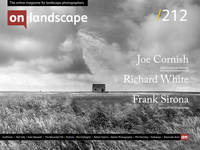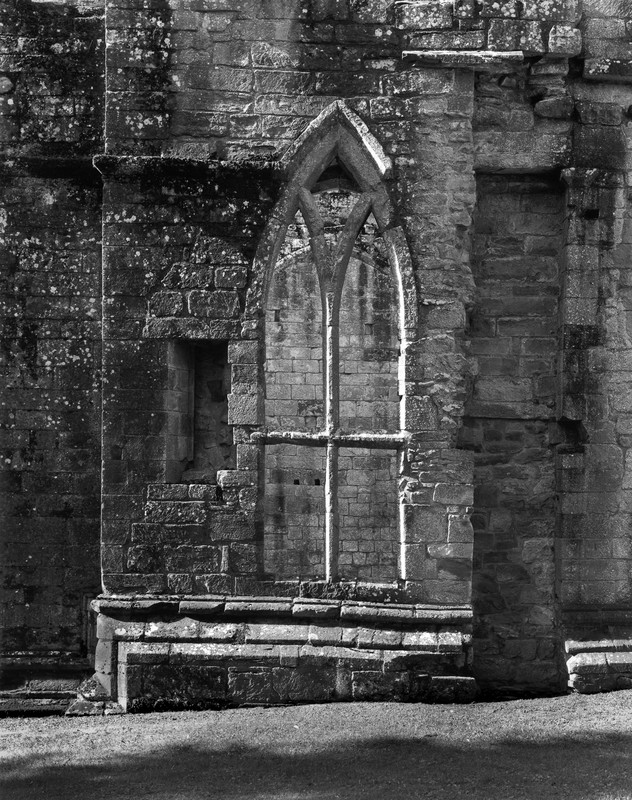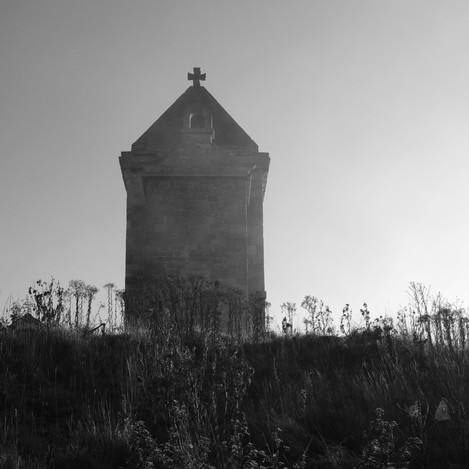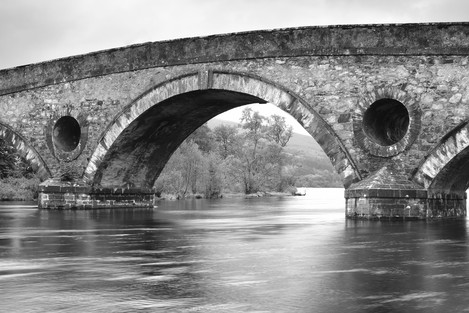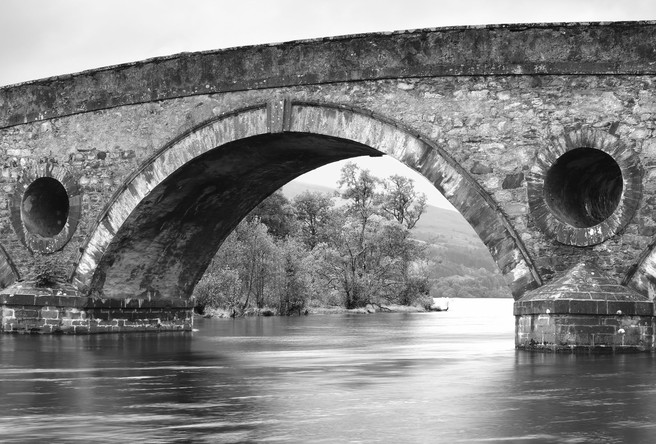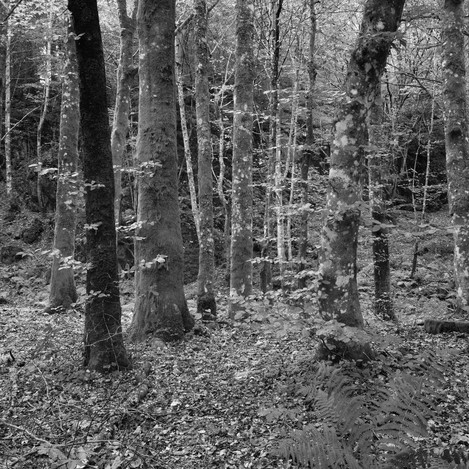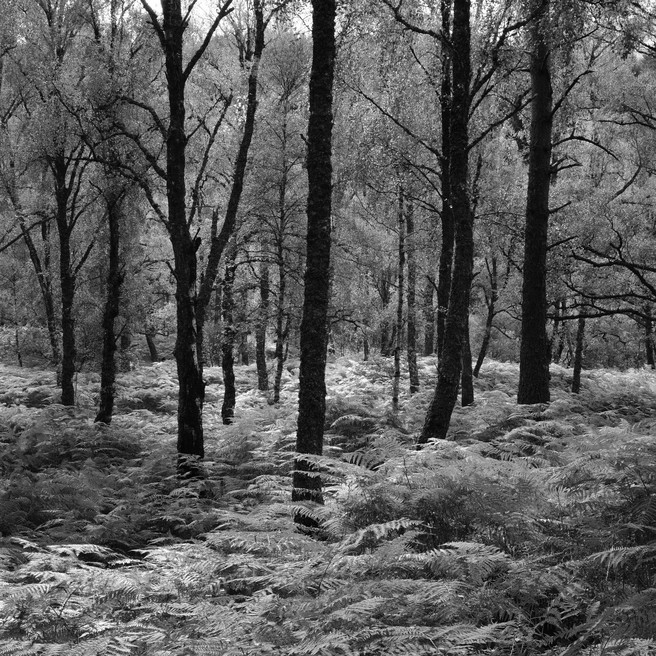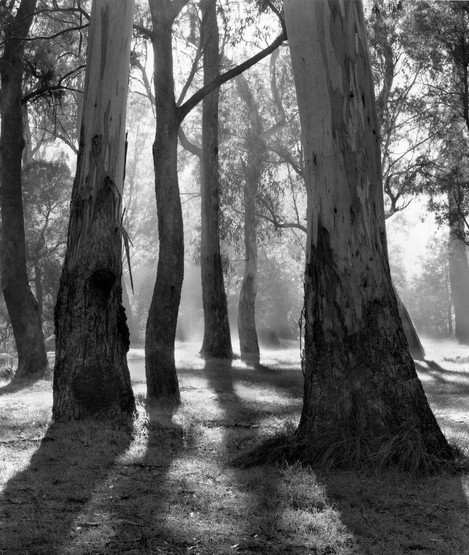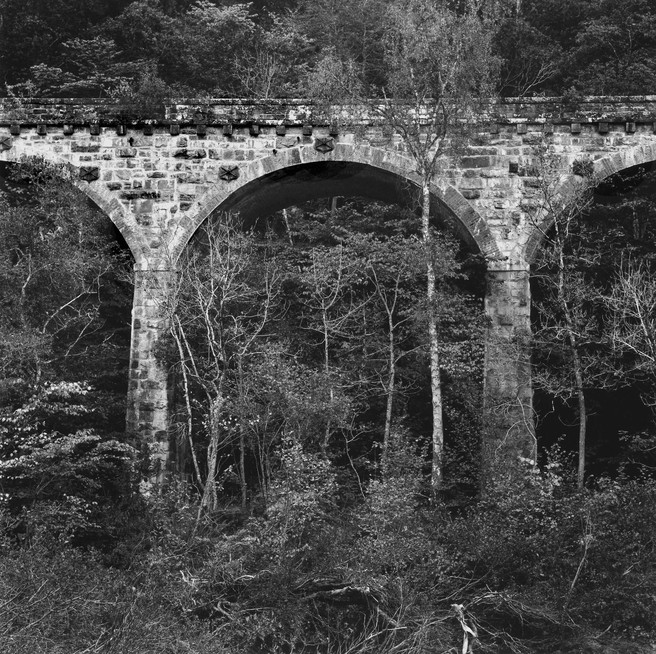Photos from a Tour around Scotland

Richard White
Richard White held the Master of Photography award with the Australian Institute of Professional Photography and in 2010 was awarded their highest honour, a Fellow of the Institute.

Tim Parkin
Amateur Photographer who plays with big cameras and film when in between digital photographs.

Joe Cornish
Professional landscape photographer.
Richard White lived in Mansfield, North East Victoria. A Master of Photography with the Australian Institute of Professional Photography and in 2010 awarded their highest honour, a Fellow of the Institute.
Richard contributed to the magazine back in 2013 when he wrote an article about 'Black and White images of the mountain bushland of Australia'. He got in touch in autumn 2019 as he was on holiday here and suggested we met up to do a podcast. Unfortunately, it coincided with when Charlotte and I were away in Norway.
Richard suggested we did an interview over Skype so we could talk through some of the images he made whilst he was over in the UK. We scheduled a call for early May, during the lockdown and as Richard was in Australia we arranged for the call to be early morning, so it was their evening!
On the day of the interview, Richard had been up Mt. Buller walking before the interview was talking to Tim about future projects.
During the interview, Richard became suddenly very unwell and passed out whilst still on the call. We were contacted the next day by Richard's son Sean to let us know his father had passed away.
Sean had been in the next room with his mother, listening to his father during the interview, and took comfort in knowing that his father's last few minutes were talking about something he loved. Sean agreed that the interview would be a good tribute to Richard.
Before we get to the interview, I'd like to include this eulogy by Joe Cornish who had met with Richard during his trip to the North East and Scotland.
Richard White
Few photographers knew or understood black and white as a medium, and the landscape he loved, as Richard White did. Having settled near Mansfield, Victoria quite early in his married life he devoted much of his time to recording the many moods and perspectives of his local landscape, part of Australia not widely promoted by tourism and little known to many Australians. This lifelong practice and devotion to place reached fulfilment in his book, The High Country, published in 2014.
Although he travelled widely, and was a popular and successful workshop leader Richard was at his happiest and his best, as a working photographer, immersed in his home landscape. The last interview with him gives some idea of his character; he was simple in his description of the photographic process, and there is no pretence or complicated elaboration in his insights. Yet his best images speak of someone who connected to his subject with subtlety, and an instinctive sense of beauty that is the mark of an artist.
I met Richard in Auckland in 2005 at a photographer’s conference, and we hit it off immediately. He had a relaxed and wry take on everything, and the jokes and stories were never far away. We shared a passion for playing and following cricket, and that was a great way of staying in touch across the thousands of miles and hemispheres. He would email and say, ‘fancy a chat soon?’ Hour-long calls would follow with ruminations on the test matches, and then more seriously on large format photography and the state of the medium. Richard was no fan of digital tech, although in the end he adopted the Fuji XT system which he used alongside his beloved 5x4 inch Ebony. It was definitely an ‘if you can’t beat them, join them’ state of mind though. I think he believed that digital was…cheating somehow.
Darkroom practice was absolutely crucial to his work; he developed an expertise through decades of experimentation with techniques, different papers, chemicals and so on. His prints have a depth and mood to them that can come across as sombre, but there is a wonderful luminosity as well which keeps them in balance. They certainly complement his photographic style, which is a blend of frankness, direct simplicity and a rhythmic sense of form increasingly evident in his later tree pictures.
In the foreword to The High Country I wrote the following:
The photographer sees things differently to the rest of us; often those differences are subtle, and come with just a twist, a wry, angular glance at the familiar, in the way that a stand-up comedian sees humour in the mundane. The ability to enjoy surprising juxtapositions, curious and choreographic relationships of form… the pure and playful curiosity of the eye… these are the qualities that make the work of landscape photography so much more than a mere document of place. When we notice the curve of a branch, the standing wave in a stream, the ragged edge of a boulder, and these echoed in the shapes of mountains on the distant horizon, then we find a new perspective and pleasure in seeing for its own sake. In this way photography confirms the significance and connectedness of all things, and crystallises them for further consideration. Making photographs with black and white film, a large format camera and the darkroom, preserving the traditions of photography, slow and hard-won, is to swim against a remorseless technological tide. But this work shows that following an independent path, doing what you believe in the way that works for you, affirms vision over novelty, and the importance, above all, of taking time to see.
He loved the UK, and when he and Jan visited ‘the old country’ as Richard liked to call it, we would invariably get together and spend some time outdoors with our cameras. He never held my own digital conversion against me, but his sense of humour ensured it was a topic for worthwhile banter. On a trip down-under in 2018, Jan and he and the family were the kindest of hosts, providing hospitality and happy memories which included a trip to the summit of Mount Stirling. He even collected me from the airport and returned me there for my onward journey, a drive of three hours each way. He was a great friend.
Richard was in his late-60s, although I had always assumed we were the same age because he looked younger, and he left us sooner than he should have. It was very tough for Tim following the interview as he realised that Richard was in trouble; but far, far harder for Jan, and Richard’s three sons, Daniel, Sean and Lewis as they have had to come to terms with his loss.
For all of us in the photographic community who knew Richard and loved his work, our hearts go out to them.
Joe Cornish
The Interview
The interview below is the final transcription of that dialogue with Richard. It's taken us a few months to be able to process this interview, as we recognise what it represents.
Please enjoy reading this interview and acknowledge the life of Richard White, who was a gifted photographer and friends of many landscape photographers in the UK.
Tim Parkin (TP): Hi Richard, good to speak with you again. As mentioned previously, I was hoping we could discuss some pictures that you took when you were in the UK last year. We were going to meet up but it didn't quite work out did it Richard?
Richard White (RW): No, these things happen.
TP: You work in digital and large format. You brought your large format camera over to take it for a walk around Scotland and the NorthEast.
RW: That's correct, yes. Hoping I'd use it more than the digital camera but it doesn't always work that way.
TP: The end result here, we have got a nice mix of digital and film images together. If you can tell our listeners a little bit about yourself. We know you're from Australia and a large format photographer, but you've been working for quite a while with large format. I should say you're also mostly black and white or all black and white would you say?
RW: 96% black and white I think.
TP: A very accurate answer!
RW: Yeah! Colour gets a look in sometimes but I try to see everything in black and white if I can.
TP: Where did you start with your photography?
RW: Gee whiz! As an amateur or a keen enthusiast, I remember I was 17 when I bought a camera to photograph motor racing. Then I travelled overseas to the UK and Europe in my Twenties. Fell in love with photography then. When I eventually got back home, it picked up a little more and I decided I wanted to do it as a profession. So when I was given the opportunity to seek alternative employment I took the chance.
TP: It's a very scary choice isn't it?
RW: Yeah, I had a friend who was a photographer and he said it's great news you can do photography. So that's how I got into the profession. I did the usual wedding portraits for a while, which is not something I ever wanted to do. As he explained though, it was a good way to get you into the profession and get you started. You can network with people and so forth. Then, after some time, I quit that and concentrated on landscape, publications and writing articles for magazines, which I've been doing for 25 years now I think. I started a calendar of the High Country, which is where I live and carried on doing a black and white calendar for 20 years. I also put out a few books, as one does I guess if you're a photographer. Now I'm embarking on slightly different calendar ideas with photographing trees, not intentionally at first but because I look back on most of my images over the years and there's always a tree in the shot! There's always something there and I found them in some really unique places too.
One of my favourite shots was from Rannoch Moor in Scotland and I think it was the second time I went there and there's a tree growing out of a rock and I thought WOW, so I took the picture and that's the sort of thing that I've been looking at doing now. I called the calendar 'Trees and where they live' so they live in some weird places I can tell you!
TP: There were only four lone trees on Rannoch Moor and I think there's only two as two of them fell over! I believe yours is still there!
RW: I haven't been back to have a look!
TP: When you came over last year where did you travel?
RW: I was mainly in the Pitlochry area around Killiecrankie and I went out to Rannoch Station and along that road up to Loch Tay.
TP: That's a stunning area. You came in autumn, so you saw it at it's best.
RW: It was fantastic! Every time I go to Scotland, as I've been five times now, I always try to go to a different area or back to something enthused me in the beginning.
TP: We have twelve pictures to have a look through. If you can tell us about where they were taken and how they were taken. We are starting off with Dryburgh Abbey. I've never visited personally, I think Joe Cornish helped you find it?
RW: No, it was my wife who said I should have a look at this. She was doing the St Cuthberts Way from Melrose to Lindisfarne and this was one of the places they went through. We used to chat each day and she said it was a beautiful abbey. When I came down to meet her, I made a beeline for this place. It was one of those pictures where when I got there, I was struggling to see anything actually. When I came around the corner and saw the light hitting the window, I thought it looked so beautiful, so I set up and made the picture. When I got home and developed the film and made a print, it didn't have that same magic that attracted me to make the picture. I still like the shot, but there was an element missing and I think it was taking a 3-dimensional and compressing it into a two-dimensional scene.
TP: It is stunning light on the image
RW: Oh yes! That's the thing that really grabbed me.
TP: Is this taken with the large format camera?
RW: Yes, using a 5x4.
TP: I know when I've used a large format and if you have both eyes open you do still see a slightly three dimensional image. I don't know if you've noticed that before?
RW: When you're looking on the ground glass you mean? Well, probably you are! It doesn't compress until you press the shutter, does it?
TP: Yes, and it's caught me out occasionally. You get that remnant of three-dimensionality.
The second image we are looking at is How Hill Tower, on what looks like quite a sunny day.
RW:It was early morning, really interesting cloud. I was with Joe Cornish on this day and we looked out the window and we could see the weather looked something special, so we went for a walk.
I've changed my mind on this picture. When I took it, I loved the light and the cloud which was moving past the building. A little bit of light on that foreground. It's a competent picture but I don't think it's a whiz bang picture.
TP: Do you find your opinion of pictures changes quite a lot over time?
RW: Sometimes. The negatives always look fantastic, this is actually a digital shot. If I look at negatives, I think, I've got a winner every time and I thought I should do an exhibition just of negatives because people would think you're something special. It's when you make a print that everything collapses often.
This one, when I put it up on the screen I thought it's not too bad, I like the atmosphere that was happening in the shot. I think it took me back to the moment which is probably why I liked it initially. But now I think it's just OK, it's not probably something I'd show.
TP: Out of interest when you're working with digital do you anything with colour filtration in post processing to try and emulate that orange/red filtration that you might use?
RW: I've got a Fuji XC II and they have the black and white settings. They've got Across settings, they've got green, red, yellow filters, which I find are not the same as the real thing, they are token gestures. I usually work in Photoshop and in curves, that's my main approach to things. If I'm going to try and add filtration it's done through that medium rather than putting something in front of the lens because it doesn't work.
If you put an orange filter in front, you just get an orange picture.
TP: I have tried putting a red filter in front of a camera and the resolution drops dramatically as well. It looks very mushy as well.
RW: I think you're using black and white and you like to use filters, for me that's why you should use film. You get a much better result. I will argue that of course, but I know myself that's the case.
TP: Our next image we have got a couple of variations off to show a bit of context. It's the Kenmore Bridge, River Tay. Do you want to go through the wider version first?
RW: As I went around I had this trees idea in my head and so I was always looking for trees. I think this is one of the first images that I could combine a beautiful bridge. I fell in love with a lot of the bridges I saw on this trip. So I took the shot and knowing that the trees were through the archway there.
When I looked at the finished picture it was more of the bridge, and I wanted it to be about the trees. I cropped as you can see in the next shot, I cropped both sides off of the bridge and just by doing that, it makes it more of a picture of the trees through the archway, rather than the bridge with some growth behind it. That's where I think cropping is really important that if it's going to improve the picture 100% or even 50%, then consider doing it.
TP: It quite dramatically changes the picture just for a small crop. The focus of interest moves.
RW: Absolutely, you go straight through to those trees in the background. I did add a bit of contrast to those and darken them slightly, to highlight them a bit more. It's the first thing you look at, but the wider shot you look at the bridge more and you don't consider the trees behind.
TP: Talking about trees we're moving on to some tree photographs and the first couple are from Killiecrankie Forest and the first one is the one with the ferns in the background.
RW: This is a film shot but at the time I think I'd be walking around and I was getting a bit frustrated by not taking a picture. I saw this beautiful light hitting the trunks, so I made a shot and then when I printed it out, it lost a bit of interest for me. I don't particularly think it works as it's not saying anything, it's just a shot of trunks and light and it's not got any compelling elements in it.
TP: Contrast that one with the one with the ferns and the very black trunks.
RW: This is a more interesting picture to look at by comparison to the previous one. I feel that there's a lot more going on with this shot, it's something I feel I could step into that image a lot easier and explore it more. Where the previous one it's the last time anyone will see it.
TP: Out of interest how do you normally print pictures in the darkroom, as these are film photographs. Do you tone anything or are they fibre based or resin prints?
RW: They are all fibre based and it's the normal procedure, selenium tones is the thing I usually do for permanence. Sometimes I use a warm tone paper and sometimes I use the cool tone depending on the image that I've taken. I don't have anything specific except fibre paper until I see the image itself.
TP: Going on to another tree photo, this is the one photograph we have from the high country I think, Manna Gums.
RW: Down on the Howqua River. I included this one for you, just because I find it of the three shots we just looked at, this is the much more interesting one and the one which works. Especially with that small tree right at the back of the photograph, the eye goes straight there. The two trunks on either side just give it nice framing. There's some beautiful mist rising up from the ground. I clearly remember when I made this picture that I did the shot and then I walked around to where that small tree was and you couldn't see the mist at all.
I remember years ago when I was quite impressionable and started out using a 5x4 camera, that I read an article by a chap who I won't mention. He's moved on to the big darkroom in the sky now. He said that you should only photograph either with the sun directly behind you or 90 degrees either side and never do a shot like this! The thing is if that was the case you don't see the mist rising off the ground, it disappears when you get around with the sun on your shoulder. I remember reading that all of a sudden I started to question this guy thought process. He lost me just in that one statement.
TP: I think a lot of people come up with these rules and should always append them with 'unless you want to'.
RW: Absolutely! Too many rules in this medium aren't there?
TP: We were talking with David Ward and Joe Cornish about that in a recent podcast.
We are coming to my favourite picture from your trip there, which is the Killiecrankie Viaduct.
RW: The Japanese tour bridge! Just reminds me of a gate they have going into a temple in Japan!
I was walking down on the river taking the track down, I think it's towards Soldier’s Leap, there's a big rock there. Apparently it's where a Redcoat soldier leapt 18ft across the raging River Garry, fleeing the Jacobite at the Battle of Killiecrankie on 27 July 1689.
I went down there to see if I could have a look at this make a picture. I walked along the river and I saw this and so I scrambled up a little bit and framed it up as you see it. It's a shot that at first I wasn't sure about but the more I look at it, the more I like it.I'm about to actually frame it up and hang it on my wall at home. It's a nice memory and for myself, it's a nice shot.

